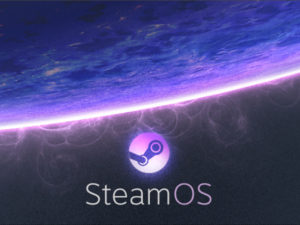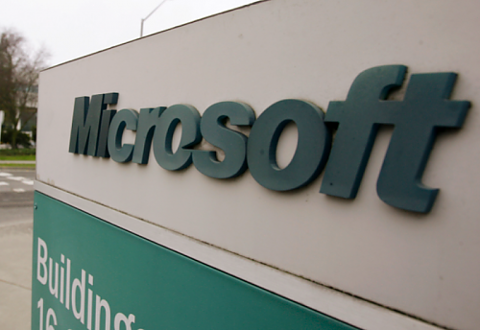With the wraps off SteamOS, the real reason why Valve has not so quietly been promoting Linux game development recently might have come out of the bag. The new operating system, which is Linux-based, is primarily geared toward entertainment. Not just games mind you – it’s for television, movies and music as well.

We’ve known for some time that Valve’s been working on a console of sorts, but the money was on it being a small form-factor PC, so the announcement came as a surprise. Perhaps we should have suspected that they would design things from the ground up. For the longest time, Steam has been little more than a background process: always-on, always sucking up memory but only interacted with as a last resort. Social networking features were quietly added, but for most users Steam has been a means to an end: It has a respectable library of content and the prices are pretty good. It beats the horrible prospect of waiting a day or two for a game to come from Amazon or having to actually walk into a bricks-and-mortar store. But with an OS of its own, things look set to change.
The Facts
In December 2012, Steam had
approximately 54 million active users. While that’s not quite in the same league as PlayStation Network (
reportedly ~90 million), it is higher than Xbox Live (
~46 million). It’s worth noting that the PSN user count includes those registered with portable systems like the PSP and PS Vita. If broken down to the “big” game experience, things might look a little different. As a side note, the 90 million user count for PSN has only ever been noted in one source --
Sony has long kept mum on the size of its gaming network. It’s also worth noting that the 54 million figure for Steam is for active users – and its users are
very active. During the slower hours of the day, there can be as few as 3.64 million concurrent users, while at peak times the number reaches as high as 5.76 million. Steam is a big gaming network -- maybe not the biggest, but certainly the second biggest. More importantly, its user base is comprised of PC users, who more often than not invest a greater amount of money in their gaming hardware than the average console user. Windows users account for the majority of the Steam user base. A quick perusal of the main page reveals something of a disparity when it comes to the amount of content available for non-Windows machines. The Mac collection is reasonable and the lag in delivery time seems to be improving, but Windows has clearly been the top priority. In fact, Mac users (of all versions of OS X combined) only
account for 1.66 percent of the total population. Linux support has only recently been introduced, so it’s not surprising that Linux users only amount to 0.94 percent of the total. The lion’s share is in Windows, with Windows 7 accounting for more than half of all users (51.95 percent) and Windows 8 off to a slow start (at 14.01 percent), but slowly gaining ground. Dedicated hardware could change those figures drastically.
Hitting Microsoft Where It Hurts
With any operating system there's always a group of loyal users, who are often too invested in software to even consider switching teams. For me, as an editor, the main requirement for an operating system is
Microsoft Office. I prefer the Windows version, but I have no issue with using the Mac variant so my loyalties change with the wind. As for gaming, there is, at present, no substitute for a Windows desktop. That and the reduced cost of the hardware have chained me to Windows for desktop computers. I mention all this because, in many ways, I don’t think I'm too different than the average user in the 25 to 35-year-old age bracket. I definitely spend more on computers than most – but I use them for running the same types of programs. If you take my preferences to be representative of the average adult gamer, you can get some pretty good insight into the impact SteamOS could have. If I were to divorce my gaming needs from the usage needs equation, I would have much less reason to stick with Windows. Aside from gaming, very little of what I do pushes my system to its limits – and while the cost of
Apple hardware has always been only slightly south of exorbitant, the price of its software, particularly OS X, is actually pretty good. Interestingly, Microsoft Office was, for a long time, a lot cheaper to purchase on a Mac. My hardware purchasing decisions always come down to a quality-cost-convenience relationship. I want my laptops to be fast and have enviable battery life. The MacBook Pro does that the best. And while the cost of the hardware has always made me think twice, the cost of the OS and its fully-integrated multilingual support make it the best laptop for my money. The only reason that I stick with Windows for my desktop is because it has always gotten better games. If the games were there for Linux, I would switch over in a heartbeat. Now let’s consider another type of user: Someone who doesn’t need to use a particular office suite for their job. With a decent Linux-based game platform, would there be any compelling reason for them to stick with Windows? I would argue no. Open Office and Office Libre are more than up to any visual-based document and spreadsheet-related tasks. LaTex is a fantastic platform for professional manuscript preparation, and Gimp is good enough to give
Adobe cause for serious worry. If you add a browser and email client to the mix, you have everything that most users will ever need. And all of these free programs work well on any of the free distributions of Linux. SteamOS is not just a curveball. It has the potential to be a perfectly-delivered Daisuke Matsuzaka gyroball. Valve has the users and the delivery platform to make things happen. It already has some 500,000 or so Linux users. But the real opportunity lies in its Windows figures. More than half of its users are working with Windows 7 (64 bit), but that number is gradually declining as Windows 8 (64 bit) use rises. People are either slowly upgrading their operating systems or they’re getting new hardware that comes with Windows 8. Many more Windows users will likely find themselves in need of an upgrade in the not too distant future -- particularly those using Windows 7 (32 bit), which accounts for 12.7 percent of all users, and those using versions of Vista or XP, which combine to approximately 15 percent. Together, that’s 27.7 percent, or nearly 15 million PC gamers. If Valve is able to entice developers, the potential market is huge – and the potential cost to Microsoft is enormous, both in terms of lost Windows sales and in reduced profit potential for the Xbox One.
Benefits to Linux
That SteamOS runs on a Linux backbone undoubtedly benefits Linux. First and foremost, it sweetens the pot for developers. A greater number of users equates to greater potential sales. More importantly, Steam users aren't business users, they’re the target demographic: gamers. Also, it brings in hardware companies that have been on the fence or less than accommodating to Linux. For example, 52.38 percent of Steam’s users use Nvidia cards. If a lot of Windows users switch to Linux, hardware manufacturers (especially video card manufacturers) will likely become motivated to provide better support.
When Will It Happen?
For SteamOS and any upcoming Steam console to pose any threat to Microsoft, one very important thing needs to happen: Valve needs to increase its Linux game library by an order of magnitude. The content navigation side of SteamOS and the movies, television shows and music that it brings to the table are all very nice, but nobody’s going to part with good money unless it has a good lineup of big-name titles. Indie stuff is fun, but it’s not enough: There are gamers who will buy a new computer just to be able to crank up the settings on the latest version of Battlefield or Call of Duty. So far, big-name developers haven’t been bothering with Linux or OS X because the money hasn’t been there, but a potential hardware line and dedicated OS will draw users. And, as the number of users increases, the bigger name developers will start to take things more seriously. For Microsoft, this will not be a shock-and-awe type scenario – rather, it will be the start of a slow bleed.
How It Will Happen
It would be wrong to think of SteamOS as an all-or-nothing proposition. Just because the OS is out there doesn’t mean people will switch to it. However, people
will experiment. As long as Valve makes it accessible, you’ll start to see it find its way into dual-boot systems and HTPCs. As more titles become available, it becomes a much more attractive proposition. Steam is, first and foremost, a digital content delivery system. In a standalone usage scenario, an operating system dedicated to delivering digital content makes a lot of sense. It may take years for Valve to set things up properly. It may even take years for the first Steam consoles to hit the market. But hard disk prices are cheap and dual-boot is easy enough to implement, so SteamOS has all the time in the world. In the meantime, Linux users can reap the benefits of all of the extra attention.
 We’ve known for some time that Valve’s been working on a console of sorts, but the money was on it being a small form-factor PC, so the announcement came as a surprise. Perhaps we should have suspected that they would design things from the ground up. For the longest time, Steam has been little more than a background process: always-on, always sucking up memory but only interacted with as a last resort. Social networking features were quietly added, but for most users Steam has been a means to an end: It has a respectable library of content and the prices are pretty good. It beats the horrible prospect of waiting a day or two for a game to come from Amazon or having to actually walk into a bricks-and-mortar store. But with an OS of its own, things look set to change.
We’ve known for some time that Valve’s been working on a console of sorts, but the money was on it being a small form-factor PC, so the announcement came as a surprise. Perhaps we should have suspected that they would design things from the ground up. For the longest time, Steam has been little more than a background process: always-on, always sucking up memory but only interacted with as a last resort. Social networking features were quietly added, but for most users Steam has been a means to an end: It has a respectable library of content and the prices are pretty good. It beats the horrible prospect of waiting a day or two for a game to come from Amazon or having to actually walk into a bricks-and-mortar store. But with an OS of its own, things look set to change.
 We’ve known for some time that Valve’s been working on a console of sorts, but the money was on it being a small form-factor PC, so the announcement came as a surprise. Perhaps we should have suspected that they would design things from the ground up. For the longest time, Steam has been little more than a background process: always-on, always sucking up memory but only interacted with as a last resort. Social networking features were quietly added, but for most users Steam has been a means to an end: It has a respectable library of content and the prices are pretty good. It beats the horrible prospect of waiting a day or two for a game to come from Amazon or having to actually walk into a bricks-and-mortar store. But with an OS of its own, things look set to change.
We’ve known for some time that Valve’s been working on a console of sorts, but the money was on it being a small form-factor PC, so the announcement came as a surprise. Perhaps we should have suspected that they would design things from the ground up. For the longest time, Steam has been little more than a background process: always-on, always sucking up memory but only interacted with as a last resort. Social networking features were quietly added, but for most users Steam has been a means to an end: It has a respectable library of content and the prices are pretty good. It beats the horrible prospect of waiting a day or two for a game to come from Amazon or having to actually walk into a bricks-and-mortar store. But with an OS of its own, things look set to change.
 We’ve known for some time that Valve’s been working on a console of sorts, but the money was on it being a small form-factor PC, so the announcement came as a surprise. Perhaps we should have suspected that they would design things from the ground up. For the longest time, Steam has been little more than a background process: always-on, always sucking up memory but only interacted with as a last resort. Social networking features were quietly added, but for most users Steam has been a means to an end: It has a respectable library of content and the prices are pretty good. It beats the horrible prospect of waiting a day or two for a game to come from Amazon or having to actually walk into a bricks-and-mortar store. But with an OS of its own, things look set to change.
We’ve known for some time that Valve’s been working on a console of sorts, but the money was on it being a small form-factor PC, so the announcement came as a surprise. Perhaps we should have suspected that they would design things from the ground up. For the longest time, Steam has been little more than a background process: always-on, always sucking up memory but only interacted with as a last resort. Social networking features were quietly added, but for most users Steam has been a means to an end: It has a respectable library of content and the prices are pretty good. It beats the horrible prospect of waiting a day or two for a game to come from Amazon or having to actually walk into a bricks-and-mortar store. But with an OS of its own, things look set to change.

